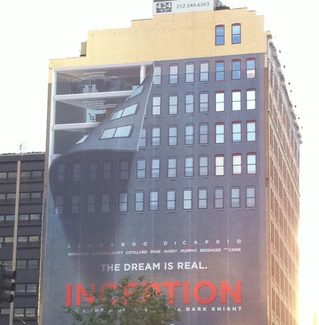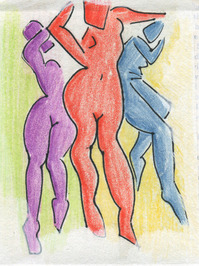 I’m looking forward to seeing the movie Inception. Judging by the advance notices, the director, and the cast, I expect it to be brilliant. I have one reservation. It’s not about the movie itself. It’s about the problematic use of a term, and how this relates to a larger problem of understanding.
I’m looking forward to seeing the movie Inception. Judging by the advance notices, the director, and the cast, I expect it to be brilliant. I have one reservation. It’s not about the movie itself. It’s about the problematic use of a term, and how this relates to a larger problem of understanding.
The problem, simply stated, is this. Powers of dreaming that are natural, fun and healing are (1) dismissed as illusory by academic “experts” who don’t keep journals and don’t seem to do much dreaming, and by hard-boiled reporters who follow their lead while at the same time (2) those same natural powers are presented by Hollywood as science fiction in which dreaming abilities are often the perquisite of drug-fueled Dark Side psychic warriors.
The problematic term is “shared dreaming.” In the movie promos, “shared dreaming” appears to be the learned technique of psychic spies and mind manipulators tasked to extract information from other people’s dreaming minds, or implant thoughts in them.
Such things are certainly possible outside of science fiction, but they are more properly described as psychic intrusion or dream sending (a term I’ll explain in a later article). Off-screen, shared dreaming may be a wholly benign and energizing consensual adventure, part of a spectrum of options for what I call social dreaming.
While we tend to think of dreams as private and personal, dreaming is actually a highly social activity. Many of us, indeed, are far more gregarious in our dreams than in our ordinary daily lives.
As we share dreams with friends and family on a regular basis, we may notice that sometimes our dreams overlap rather closely. We may have been dreaming on the same theme, or visiting the same dreamscape, on the same night. Sometimes we have shared adventures, though (more often than not) only one of the dreamers remembers exactly what was going on.
We are drawn together in dreams in the same ways that we are drawn to each other in waking life: by family ties, by shared interest, by common concerns, by love and sexual attraction, by the need for healing or the desire for fun and adventure
As we become Active Dreamers, we can develop the practice of embarking on conscious interactive dream journeys with focused intention. We can do this up close or at any distance. We can learn to enter shared dreaming with an intimate partner who shares our bed, with a group of friends in a living room, or with a network of dreamers in other parts of the world.

Let’s pause to define the varieties of social dreaming:
Synchronous or concurrent dreams are those in which two or more dreamers have very similar dream experiences at the same time. They may or may not see each other inside the dreams.
Interactive or mutual dreams are those in which two or more dreamers are aware of each other and interact with each other in a shared dreamscape. In terms of ordinary time, their experiences may or may not be synchronous.
Shared dreaming, in my lexicon, is the practice of embarking on intentional interactive dream travels with one or more partners.
Group dreaming or group dream travel is shared dreaming conducted with a whole circle or network of participants.
Director Christopher Nolan said in an interview with the New York Times: “What Inception deals with is a science fiction concept in which…you and I are able to experience the same dream at the same time. Once you remove the privacy, you’ve created an infinite number of alternate universes in which people can meaningfully interact – with validity, with weight, with dramatic consequences.”
Yes, it’s a great idea for a movie. And far from being only a science fiction concept, interactive or social dreaming is a real phenomenon in our lives that may go on every night. Shared dreaming is a practice that can be learned – without chemicals or psywar trainers – and developed as both a home entertainment system and a method of gaining first-hand data on the nature of life in the multiverse. We’ll see how in the next article.
Next: Shared Dreaming as Home Entertainment
Poster for “Inception” spotted in New York City.
“Three Muses” drawing by Michele Ferro

